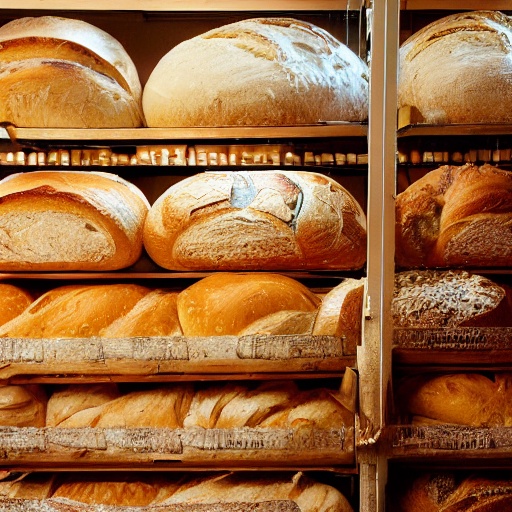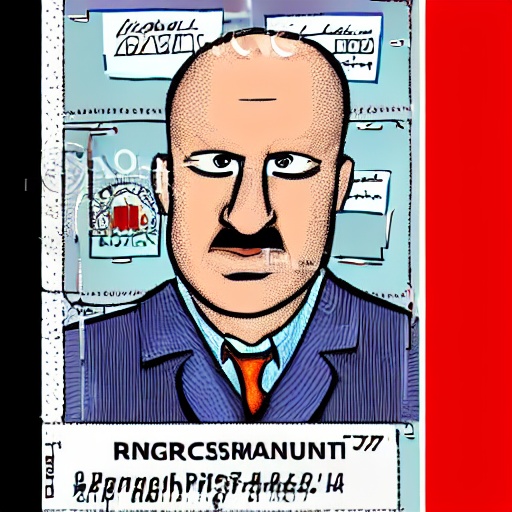
How does bread serve as a symbol of migration, assimilation, and evolution?
Bread serves as a symbol of migration, assimilation, and evolution in multiple ways. Firstly, the spread of bread-making techniques and recipes across different cultures and continents is a testament to the migration of people and the exchange of culinary traditions. As people moved from one region to another, they brought their bread-making skills and recipes, which gradually assimilated into the local culture and evolved over time. Secondly, bread itself symbolizes assimilation and integration, as it often acts as a common ground between diverse communities. When people from different cultural backgrounds come together and share bread, they are not only nourishing their bodies but also forming connections and bridging cultural gaps. Lastly, the evolution of bread-making techniques and the variety of breads available today reflect the continuous innovation and adaptation of bread to suit the changing needs and preferences of societies.
What are some examples of bread’s cultural significance in different parts of the world?
Bread holds immense cultural significance in various parts of the world. For example, in France, bread is not just a food but a symbol of national pride. The French take great pride in their baguettes and consider them an essential part of their cuisine. In Mexico, during the Day of the Dead celebrations, pan de muerto (bread of the dead) is baked as an offering to ancestors. The bread is elaborately decorated with sugar and shaped into skulls and bones, serving both as a culinary delight and a cultural tradition. In India, bread plays a significant role in religious rituals. Roti, a type of Indian bread, is often offered to deities during prayer ceremonies. In addition, the act of breaking bread and sharing it with others is a common practice in many cultures, symbolizing hospitality, friendship, and unity.
In what ways can bread bring people together and foster unity?
Bread has the remarkable ability to bring people together and foster unity in various ways. Firstly, the act of sharing bread creates a sense of community and belonging. When people come together to break bread, they are not only sharing a meal but also sharing stories, experiences, and laughter. It is a moment of connection and shared humanity. Secondly, bread often forms the centerpiece of communal gatherings, such as family dinners, social events, and religious ceremonies. The presence of bread on the table creates a focal point for conversation and interaction, encouraging individuals to come together and bond over a common experience. Lastly, bread transcends cultural and language barriers. Regardless of one’s background or upbringing, the simple act of enjoying bread can create a sense of familiarity and common ground. Whether it’s a crusty baguette or a fluffy naan, the shared experience of savoring bread can bridge differences and promote understanding among diverse groups of people.
Full summary
Bread carries the stories of cultures past and present, and is a symbol of migration, assimilation, and evolution. It serves specific communities and often holds religious or political significance.
In a world full of diverse cuisines and culinary traditions, few foods have the universal appeal and significance of bread. From the pillowy poi that mops up a fiery fish curry on a Goa beach to the lightly burned peasant bread enjoyed with a house red in a Roman trattoria, bread connects people across cultures and continents.
One example of the cultural significance of bread can be found in Iceland. Walking along the shores of Lake Laugarvatn, visitors can smell the sulfur and feel the black sand beneath their feet. Here, the buried pot of rye bread is dug up and sliced, and the hverabrauð is enjoyed with butter and smoked trout. The geothermal energy in Laugarvatn plays a vital role in baking this unique bread, and the process of baking hverabrauð has become a tourist attraction, with the Laugarvatn Fontana spa and bakery opening its doors to visitors. The recipe for hverabrauð is shared on tours, and visitors can learn about the ingredients and cooking process while appreciating the geological marvels of Laugarvatn.
But the cultural significance of bread extends far beyond Iceland. In different corners of the world, bread plays an anchoring role in the daily lives of millions. In São Paulo bakeries, people come together over morning bread, sharing stories and forming connections. In Sri Lanka, choon paan vans deliver fish buns and white bread, bringing communities closer through the joy of food. Explore the bustling streets of any city, and you'll find the scent of freshly baked goods luring locals and tourists alike.
Bread is not just a source of sustenance; it is a symbol of unity and resilience. Breaking bread with others is an invitation to commune, to connect on a deeper level. It is a reflection of culture and traditions, serving religious and political purposes in different communities. Bread carries the stories of migration, assimilation, and evolution, reminding us of the journeys that have shaped our world.
In a world that sometimes feels divided, bread has the power to bring people together. Chefs in the US are putting new twists on scallion pancakes, showcasing the influence of diasporic communities on culinary traditions. Native Americans are reconsidering their relationship with fry bread, reclaiming their heritage and exploring healthier alternatives. In Jordan, the Al-Barakeh Wheat Project aims to revive ancient loaves and restore bread to its original habitat. By cultivating native wheat varieties and reintroducing traditional farming practices, the project is not only addressing Jordan's import dependency but also sparking meaningful dialogues around local wheat and bread.
As we continue to explore the cultural significance of bread around the world, we discover its power to inspire and remind us of its importance. Bread is not just a food; it is a link between generations, a vessel for stories and memories. Whether it's the pan de muerto served with café de olla in Oaxaca, or the Mille-feuille enjoyed in a Parisian pâtisserie, bread is a part of our collective human experience.
Let us celebrate bread in all its forms and flavors, and recognize its role in sustaining our bodies and our souls. It is through the appreciation and understanding of the significance of bread that we can truly embrace and connect with the diverse cultures that make up our world.







